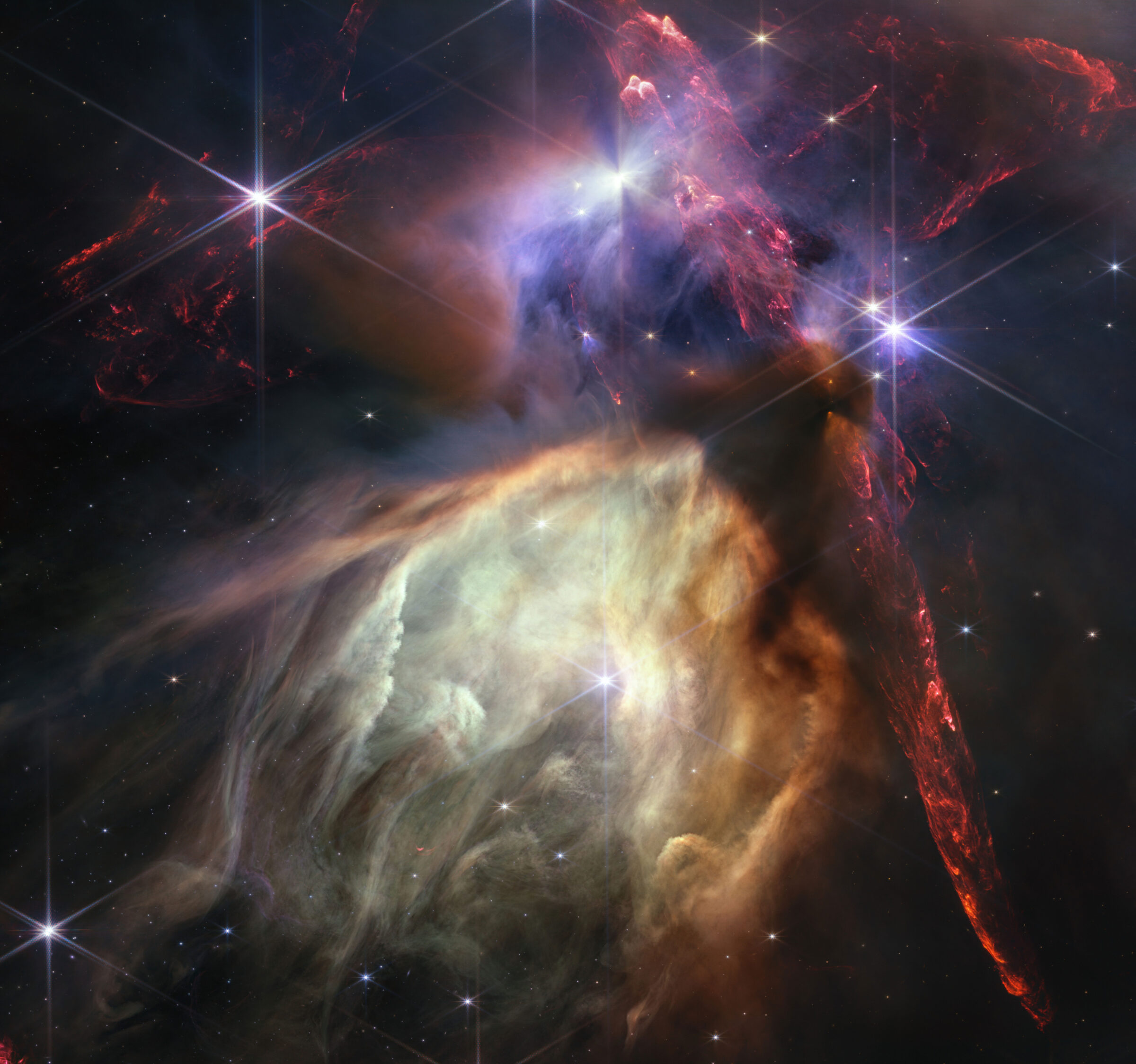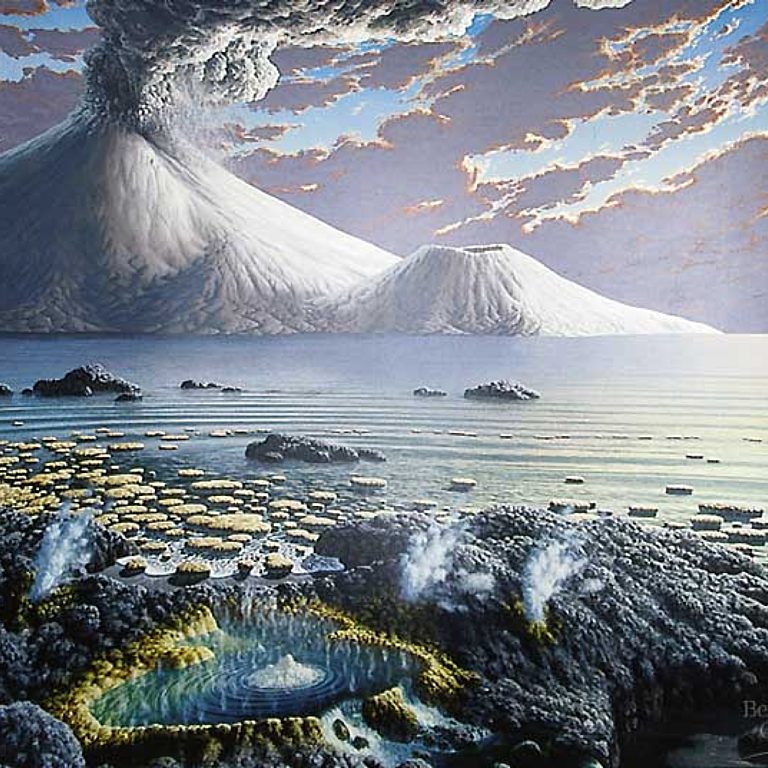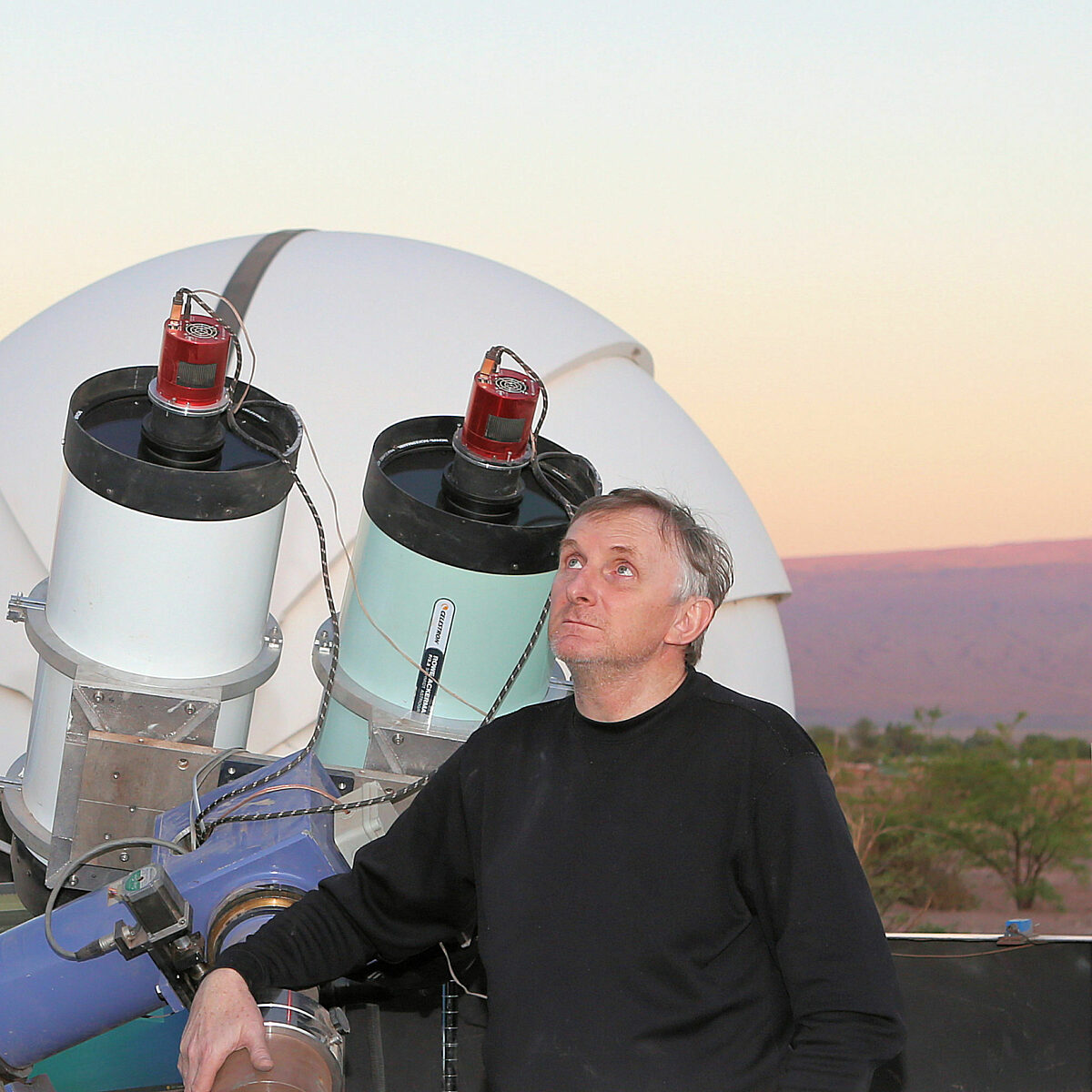
On the Cover: This image from Sujeet Singh shows a figure silhouetted against the Milky Way galaxy. It represents the need to include ourselves in the search for life beyond Earth. Only by understanding this manifestation of life, from its origins in biology to the artifacts we humans create, can we hope to successfully find and recognize life forms elsewhere in the Cosmos.
Download PDF
Features
September Equinox 2024
Earthlings as aliens
Looking at life on Earth from another perspective.
Connecting ancient life to other worlds
Looking to the past to guide the search for life.
Extraterrestrial artifacts
Could the Solar System host traces of other intelligent life?
Your impact: September equinox 2024
Exploring Europa and defending Earth.
Your place in space
Wondering wanderers seeking the same: Searching for life in all its possible forms
By Bill Nye, Planetary Society CEO
As a living thing here on Earth, I’ve always been fascinated with the idea that both Charles Darwin and Alfred Wallace reasoned that all life on Earth must have arisen from a single common ancestor. In their time, they were called “naturalists” — investigators working to know nature and its ways.
After studying as many living things as they could get their hands (and eyes) on, Darwin and Wallace figured it would be extraordinarily unlikely that two completely different types of living things showed up at the same moment here on Earth, maintaining their metabolisms and reproducing. They reached the conclusion that all life must have come from a single being. But other researchers speculate that there may have been or even still is a whole other form of life on Earth, and we just haven’t found it yet — some undiscovered microorganism living in cracks in rocks deep underground, or something.
I cannot help but remember the time I wandered onto the third floor of the space sciences building in college and came across a very large, nearly spherical glass vessel with electrodes sparking away, in which researchers were trying to coax chemicals to start living. It was a form of the famous Miller-Urey experiment, testing the hypothesis of life beginning when lightning struck certain self-organizing compounds in a “primordial soup” in ancient Earth’s ocean. This setup doesn’t quite do the trick. Researchers pondering the problem are now working with extraordinary gene sequencing machines and other instruments to tease out the missing details of the molecular arrangements that may have led to us. The question remains: Where did Earth’s life come from? It’s something to consider as we explore worlds and learn more about what it takes to stay alive on our own world.

As I write, astrobiologists around the world are trying to understand the process by which we all came to be so that we can extend that understanding to the search for life in the Cosmos. By the way, when the search for extraterrestrial life started being taken seriously, the discipline was called “exobiology” rather than “astrobiology.” Perhaps the prefix “ex” had an “it’s-already-over” connotation, so it didn’t catch on. But of course, the excitement about the possibility of life elsewhere in the Universe is stronger than ever.
In February, The Planetary Society held a Search For Life Symposium at our headquarters. Experts from universities and space agencies — including those whose expertise is featured in this issue — came together to share their research and ideas. For me, this was utterly fascinating.
If we came across another self-replicating form out there, how would we know that it’s alive — or what we think of as alive? Is it something akin to a mineral or crystal that grows and throws our reasoning off course? Does this growing form wonder about wandering forms like us? It’s the search for life writ large as can be. That search gets to us all. It’s intimately connected with what we do here at The Planetary Society.
Thank you for your support and for helping us all ponder our origin and our place in space.
Members on deck
Member community talk
The Planetary Society's online member community at community.planetary.org is a great place to share ideas and discuss the big questions in space exploration. From time to time, we post questions to prompt discussion. Here are a few answers to some of those questions, from the deep and scientific to the silly and playful.
Where are you most excited for humanity to explore in hopes of finding life? Why?
"I think in the immediate future, searching for life on Europa and Titan. To find life in our own Solar System would have profound implications given we have already found over 5,000 exoplanets, each with likely many moons themselves!" — Kelsey Harkness-Jones, U.K.
If we found microbial life on another planet, how do you think this discovery would change our understanding of life in the Universe?
"I think it would confirm my own suspicions about life in the Universe. My suspicion being that life is abundant in the Universe at least in simpler forms. I suspect that more complex and intelligent spacefaring life is exceedingly rare." — Phillip Leavenworth, USA
"It would change everything. We would then have two models for life. What are the basic building blocks? Including what atoms and molecules are used by this life form. How does it reproduce? Certainly not using DNA. What is the mechanism? And on and on. A million questions to ask and a million answers to be sought to be discovered. It will be an amazing time." — Robert Danna, USA

How likely do you think it is that humanity will discover microbial extraterrestrial life in the next 100 years?
"If 'the truth is out there,' we’ll probably find it within a century. If life is extremely rare and Earth is the only inhabited place in our galaxy, it might never happen. Nevertheless, the quest is exciting and rewarding." — Sabine Vollenhofer-Schrumpf, Austria
"Extremely likely! I think Europa Clipper is going to do the job." — Hugo Rodriguez, Mexico
"If not extant life beyond Earth, perhaps we’re as likely to find evidence of life gone extinct on other planets and/or moons. Hundreds of millions of years is a long time for life to come and go elsewhere. Perhaps simple life forms arose relatively quickly and abundantly back when conditions were more favorable on other bodies, but then failed as environmental conditions got too hostile. If this thinking has merit, I could imagine quite a future cottage industry for planetary archaeologists — studying the rise and fall of alien microbes (or even more sophisticated things) now long extinct." — Dale Davaz, USA
Imagine we make contact with an intelligent extraterrestrial civilization. What would be the first question you’d want to ask them?
"Most people here are going to propose deep, important questions. But I am posting this at local dinnertime. Depending on the species, I would ask for their best recipe for plomeek soup, gakh, or tube grubs. I’m hungry. Also, do you have anyone on your planet similar to cats, and do they also, effectively, rule your world as ours do?" — Mel Powell, USA

Get involved
Become an expert on the search for life
Members have exclusive access to our newest online course, The Search for Life. This seven-part course takes students through an in-depth exploration of the ways humans are looking for life beyond our planet. The course features scientists and engineers working at the forefront of the search for life who’ll teach you about new research, ambitious missions, the latest theories, and more. From Mars and Europa to exoplanets and far beyond, journey through the Cosmos with host Asa Stahl and become an expert on the search for life.
This course is available in The Planetary Society’s online member community. Log in at community.planetary.org.
More to explore in the member community
Check out your member community for lots of great ways to connect with other space enthusiasts, build your knowledge, and have fun! Highlights include our monthly virtual book club, Q&As with space experts, special events like space policy telecons, spaces to share artwork and astrophotography, a space job board, weekly space trivia, and so much more.
Go to community.planetary.org to log in and discover all the ways to engage with your space community.
New! A series of kids’ books all about the planets
The Planetary Society has partnered with Lerner Publishing to produce a series of kids’ books all about the planets. Written by Chief Scientist Bruce Betts, each book focuses on one of our Solar System’s eight planets, with easy-to-understand content and cool pictures. You can order them now through Lerner Publishing.
Calendar of events
SEPTEMBER 8
Saturn at opposition
SEPTEMBER 14
International Observe the Moon Night
SEPTEMBER 17-18
Partial lunar eclipse
SEPTEMBER 18
Super harvest Moon
SEPTEMBER 22
September equinox
OCTOBER 2
Annular and partial solar eclipse in South America
OCTOBER 4-10
World Space Week
OCTOBER 7
Draconids meteor shower
OCTOBER 8
Hera launch window opens
OCTOBER 10
Europa Clipper launch window opens
OCTOBER 17
Supermoon
OCTOBER 21-22
Orionids meteor shower
NOVEMBER 4-5
Taurids meteor shower
NOVEMBER 15
Supermoon
NOVEMBER 16
Mercury at greatest eastern elongation (best viewing)
NOVEMBER 17
Uranus at opposition (best viewing)
NOVEMBER 17-18
Leonids meteor shower
DECEMBER 7
Jupiter at opposition (best viewing)
What's up?
Plenty of planets and Mars brightness
By Bruce Betts, Planetary Society Chief Scientist
In the sky
Reddish Mars will rise in the east in the middle of the night in September and will rise earlier as the weeks pass. It is up in the evening by December. Watch it brighten as the days pass and Earth and Mars get closer in their orbits. By December, it will be almost as bright as the brightest star. Very bright Jupiter will rise in the east around sunset by December after rising later in the evening before then. Yellowish Saturn will rise early in the east after sunset, getting higher as the weeks go on. Mercury will be visible low to the western horizon soon after sunset in the west in mid-November. Super-bright Venus dominates the early evening west. On Oct. 2, an annular solar eclipse is visible from parts of Argentina and Chile. The Geminids meteor shower peaks Dec. 13/14, with increased activity several days before and after. The Geminids are usually the best shower of the year with 100+ meteors per hour from a dark site, but this year, a nearly full Moon will wash out many of the meteors. For more night sky tips, you can always check out planetary.org/night-sky.

Random space fact
Nearly 300 meteorites found on Earth have been identified as coming from Mars, and rovers have found several meteorites on Mars that came from elsewhere.
Trivia contest
Our March Equinox contest winner is Yvonne Tavalero of Rohnert Park, California, USA. Congratulations! The question was: Besides the USA and Russia, what country has had the most people go to the International Space Station? The answer: Japan.
Try to win a copy of the new book “Casting Shadows: Solar and Lunar Eclipses with The Planetary Society” by Bruce Betts and a Planetary Radio T-shirt by answering this question: What type of celestial object, when the first one was discovered, was nicknamed LGM-1, standing for Little Green Men-1?
Email your answer to [email protected] or mail your answer to The Planetary Report, 60 S. Los Robles Ave., Pasadena, CA 91101. Make sure you include the answer and your name, mailing address, and email address (if you have one). By entering this contest, you are authorizing The Planetary Report to publish your name and hometown. Submissions must be received by Dec. 1, 2024. One entry per person. The winner will be chosen in a random drawing from among all the correct entries received.
Astronomical art
“Cradle of Life”
“Cradle of Life” by Planetary Society member Aldo Spadoni was commissioned by and created for the National Radio Astronomy Observatory (NRAO). This piece symbolically portrays the proposed Next Generation Very Large Array (ngVLA) over the state of New Mexico, looking north. It represents the compelling future radio astronomy investigation areas being defined by the NRAO Cradle of Life Science Working Group. These areas include the study of star and planet formation and the evolution of protoplanetary disks as well as the investigation of the chemistry of planet-forming regions in interstellar space, a key to understanding the initial conditions that lead to the development of life. This fine art piece was created digitally.
Do you want to see your artwork here? We love to feature our members throughout this magazine. Send your original, space-related artwork to [email protected].
The Planetary Report • September Equinox 2024
Help advance space science and exploration! Become a member of The Planetary Society and you'll receive the full PDF and print versions of The Planetary Report.


 Explore Worlds
Explore Worlds Find Life
Find Life Defend Earth
Defend Earth






